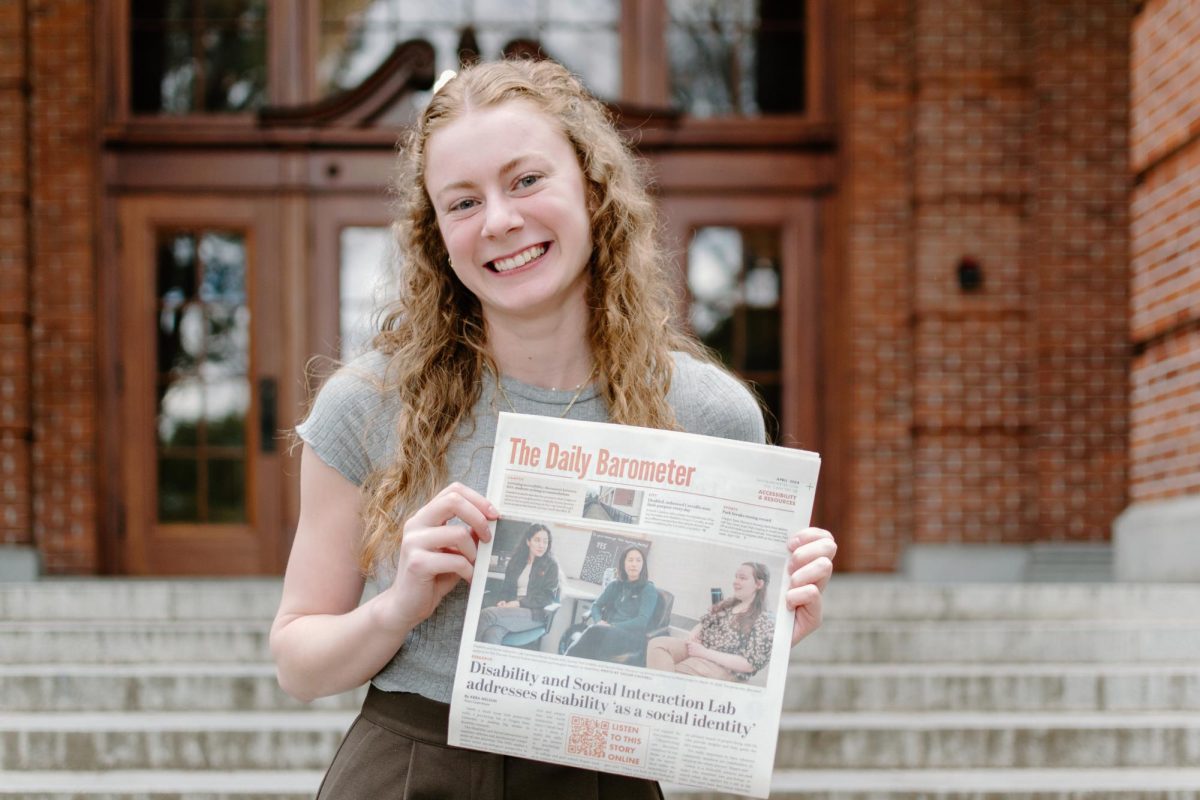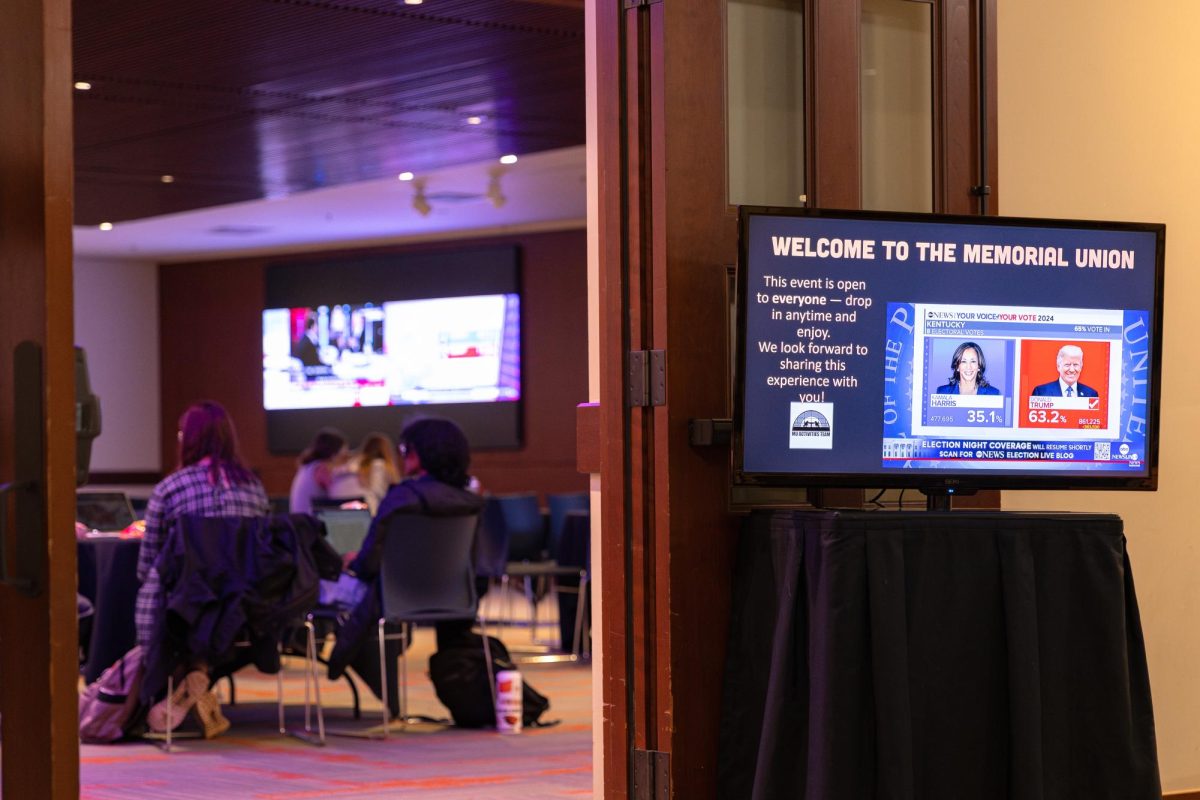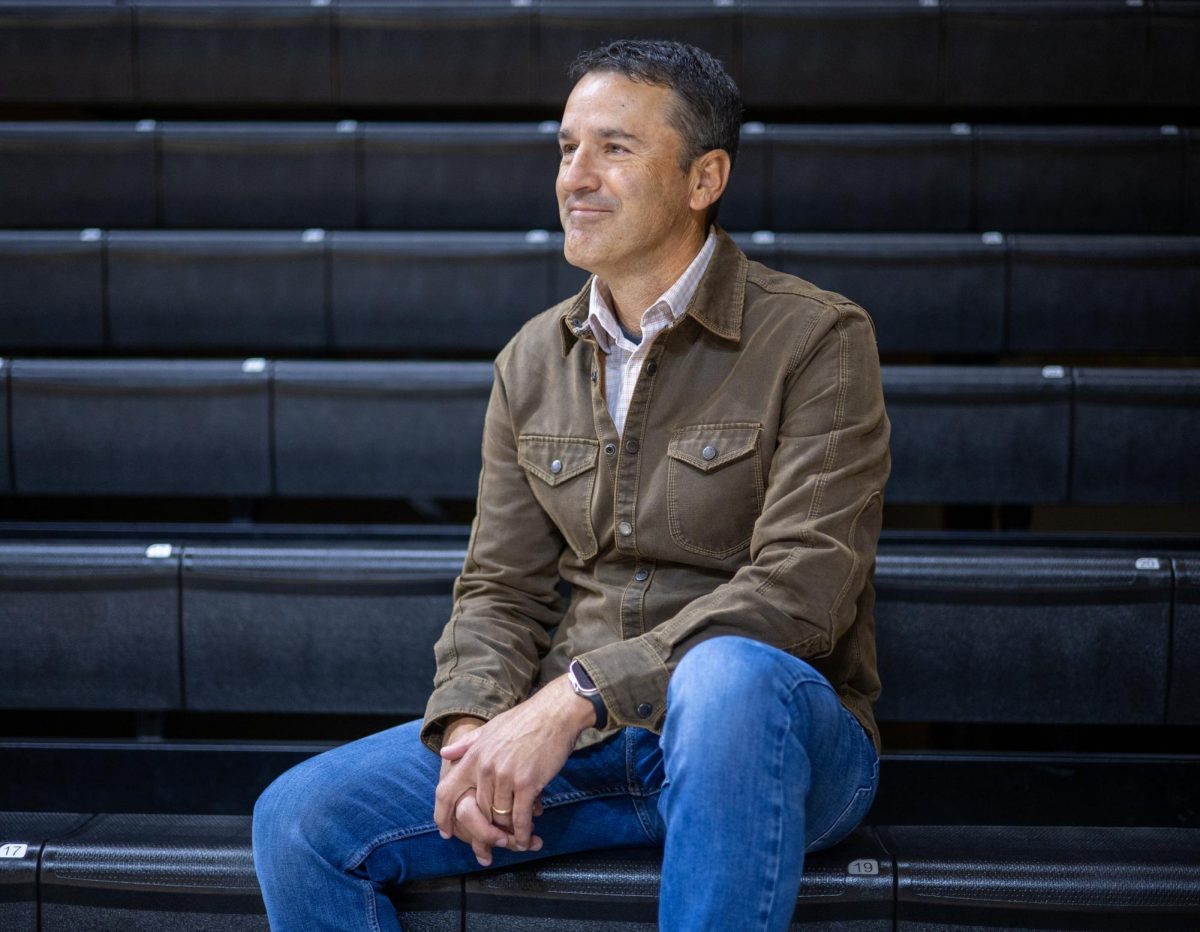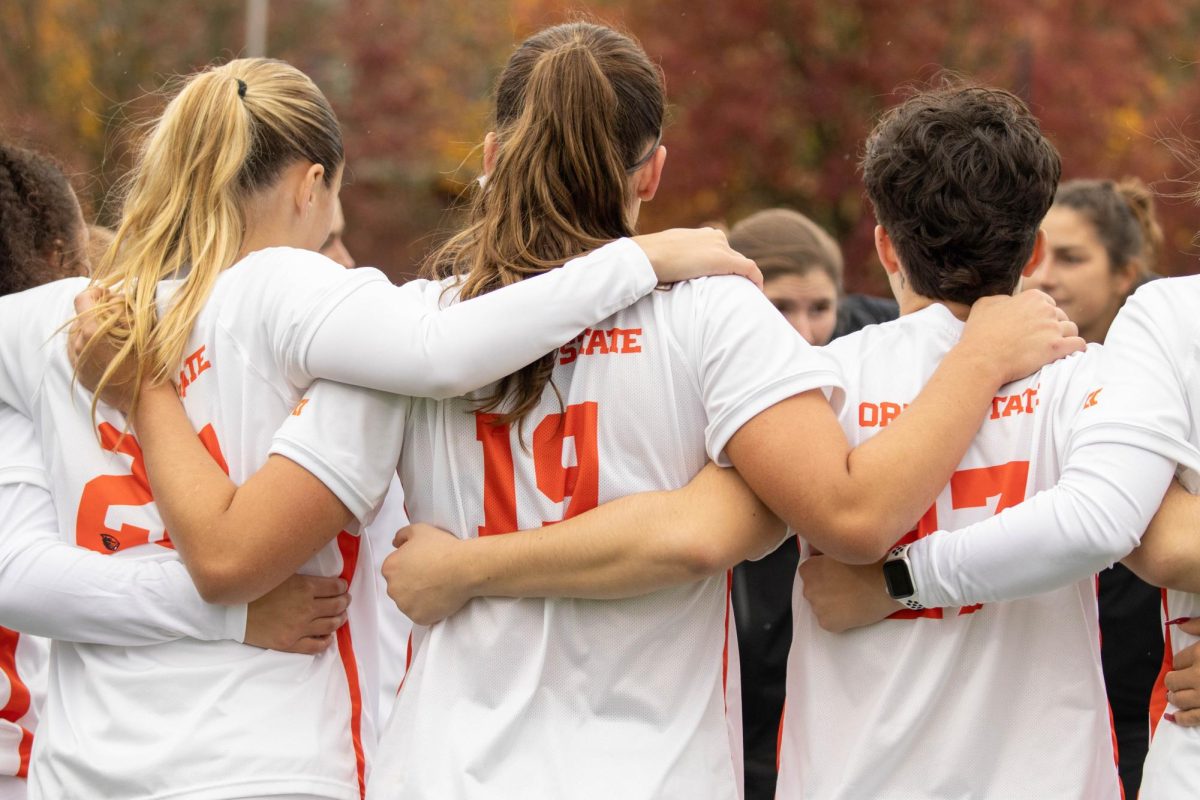OSU student advocacy goes far beyond just campus politics
A photo illustration depicting hands offering and accepting various foods, with the snacks being examples of the items purchasable with government aid SNAP cards, photographed on June 29, 2023 in front of Oregon State University’s Basic Needs Center in Corvallis.
July 3, 2023
OSU students: do you use the Supplemental Nutrition Assistance Program? This year, students are pushing for expansions on the Corvallis campus, along with the Hunger Free Campus Bill.
Advocating on campus and at a statewide level, Associated Students of Oregon State University and the Pride Center support a SNAP expansion on campus, as well as the Hunger Free Campus Bill proposed to Oregon legislation.
Last summer, Maryssa Reynoso, diversity and inclusion director for ASOSU, wanted to address food accessibility on campus.
According to Reynoso, access to basic needs are a big component for health, physically and mentally. Mental health support is a big concern for the psychology graduate.
“My focus this year was addressing food insecurity,” Reynoso said. “That was one of the top three concerns that (ASOSU) heard about last year.”
Reynoso partnered with Kaitlyn Kim, former senator for ASOSU, to draft a SNAP/Electronic Benefits Transfer resolution bill–encouraging and supporting a movement to make food more accessible to low income students and others that use SNAP benefits.
According to Reynoso, the Cascadia Market went through a five-year process to become eligible to accept SNAP/EBT.
According to the United States Department of Agriculture, SNAP authorized stores must meet one of two staple food requirements: a store “must have three stocking units of three different varieties for each staple food category on a continuous basis,” or “a store must have more than 50% of its total gross retail sales from the sale of staple foods.” Staple foods include vegetables, fruits, dairy products, meat, poultry, fish, breads and cereals.
Throughout the year, Reynoso and Kim went through the process of research, outlining, drafting and seeking signatures and approvals.
According to Reynoso, however, University Housing and Dining Services did not think it was feasible to expand SNAP benefits on a fiscal level, because SNAP does not make the university as much money as selling normal products.
“The administrators are interested in having this conversation going forward and supporting something like this,” Reynoso said. “They’re just not sure if this is the right path.”
Reynoso is graduating this year, but hopes there will be a committee created in the future between ASOSU, the Basic Needs Center and UHDS to continue the conversation and address what the bill will look like going forward.
“Making money definitely makes a difference,” Reynoso said. “And proving to (the university) that this is going to make them money can be kind of difficult.”
According to Reynoso, a big contention was rising costs for students if SNAP/EBT were to be accepted at more locations on campus.
However, Reynoso feels “bittersweet” about the situation: sad that she will not be around to see the bill progress, but happy that she was able to set the foundation for others to continue the work.
Reynoso has also lobbied for the Hunger Free Campus Bill proposed to the Oregon State legislative assembly. This bill requires the Higher Education Coordinating Commission to administer a grant program to provide money for funding student hunger programs and innovations at public universities and community colleges, when funds are available.
This bill was also lobbied by student employees working in the Pride Center, including Carter Trinidad, a women, gender and sexuality studies major.
Trinidad said one caveat attached to the bill they felt was important was assigning a designated staff member who is responsible for assisting students with enrollment in the SNAP program.
The BNC had a SNAP “specialist,” however, they have changed directions and have asked student employees to double as those specialists, Trinidad said.
According to Trinidad, this creates a convoluted process for students wanting to sign up for SNAP benefits, also students having to be vulnerable about their situation with student employees.
“What we’ve been noticing is that there are a lot of students being affected by it,” Trinidad said. “First gen students especially.”
According to Trinidad, parents with first-generation students, for example, might use their child’s social security number to find work, housing, receive loans and more.
These situations warrant an actual “specialist” to assist those students in similar situations, so that they do not put themselves or anybody else at risk, Trinidad said.
Tim Nguyen, biomedical engineering student and BNC employee, says his work at the BNC is similar to what he wants to pursue as a career in biomedicine, working with people and figuring out their wants and needs.
At the BNC, students can find food, books, hygiene products, free laundry, and more.
“One of our goals is to build community,” Nguyen said.
Nicole Hindes, director of the BNC, said the center is regularly in conversation with people on how they can improve. According to Hindes, the center helps thousands of students each term, with one term reaching over 3,000 students.
“If folks raise a concern, we address it,” Hindes said. “But we also don’t know what people don’t tell us.”
Although the BNC employed a full-time employee to help students with SNAP applications, there is no certification or job position that would consider a person a “SNAP specialist,” according to Hindes.
In addition, having one designated employee to deal with SNAP applications garnered month-long wait times compared to divvying the work between student employees.
According to Hindes, using student employees to help students with SNAP applications was a more sustainable model.
“It results in a better quality of service in terms of just how many people we can support,” Hindes said.














































































































